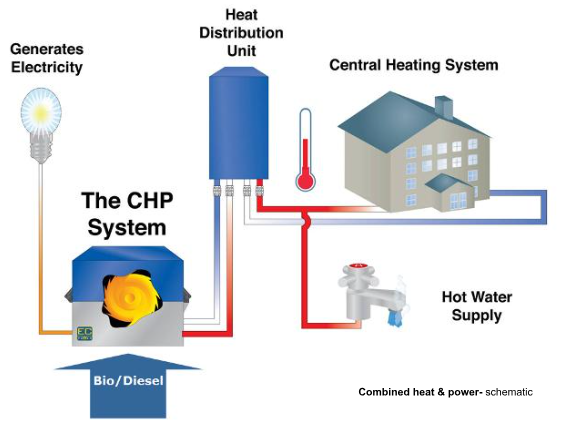IB DT: Topic 2.3: Energy utilization, storage and distribution
1/16
Earn XP
Description and Tags
credits https://docs.google.com/presentation/d/1E2rY-DzYgeaXJMUWr8JnCg2rcSZhLXNajbv436j_k0I/pub?start=false&loop=false&delayms=3000&slide=id.g13f1151ba5_3_159
Name | Mastery | Learn | Test | Matching | Spaced |
|---|
No study sessions yet.
17 Terms
what is embodied energy?
the total amount of energy/carbon emissions required to make a product
what are the different stages we might consider when calculating embodied energy?
materials: energy used to extract the raw materials and process them into usable building products at the gate of the factory (cradle to gate)
transport: energy used to transport the building materials from the factory gate to the building site
assembly: energy used to construct and create the product
recurring: energy used to maintain and replace certain elements of the product over its entire lifespan
demolition/disposal and recycling: energy used to demolish and recycle the product’s components, and feed the resultant materials back into the “food chain”
how is energy distributed through national and international grid systems?
an electrical grid is an interconnected network for delivering electricity from suppliers to consumers. it consists of generating stations that produce electrical power, high-voltage transmission lines that carry power from distant sources to demand centres, and distribution lines that connect individual customers.
what is local combined heat and power (CHP)?
a clean and efficient approach to generating electric power and useful thermal energy from a single fuel source.
used to either replace or supplement conventional separate heat and power (SHP).
instead of purchasing electricity from the local utility and burning fuel in an on-site furnace or boiler to produce thermal energy, an industrial or commercial facility can use CHP to provide both energy services in one energy-efficient step.
the plant is close enough to the community so that the heat generated can be dispersed through the community efficiently.

what are the advantages of CHP?
reduced energy costs versus separate heat and electrical generation systems
reduced emissions
where the capture and use of waste heat is not viable, many industrial facilities may still benefit financially via distributed generation (DG - energy generation done by small-scale energy systems installed near the energy consumer)
what are systems for individual energy generation?
microgeneration: the small-scale generation of heat and electric power by individuals, small businesses and communities to meet their own need.
used for environmentally conscious approaches that aspire to zero or low carbon footprints or cost reduction.
what is the quantification of carbon emissions?
a process to try and establish where and how much carbon is being produced globally.
involves recording carbon emissions, discovering how much is being produced, who/where it is produced, and tracking carbon footprint
what are some of the consequences of carbon emissions?
contribution to global warming
melting polar caps, rising seas and desertification
what can be done to mitigate carbon emissions?
provide sinks that can reabsorb carbon emissions: such as forests, vegetation or soils
what is a battery?
a device consisting of two or more electrochemical cells that convert stored chemical energy into electrical energy - made from important resources and chemicals such as lead, cadmium, zinc, lithium and mercury
what are the impacts of batteries and other electrical components like capacitators and chips?
the portability of electronic components - making them efficient and smaller
why is it good to recycle batteries?
keeps them out of landfill and means precious metals can be recovered. if batteries go into landfill, heavy metals may leak into the ground when the battery casing corrodes (causing water and soil pollution). if batteries are incinerated with household waste, the heavy metals in them may cause air pollution.
facts about lithium ion batteries (LiPo)
contain: manganese dioxide, lithium and copper
deemed to be non-hazardous, can be taken to standard recycling centres
known for its volatile reaction to heat
high energy density, lightweight, rechargeable
used in consumer electronics, drones, medical devices, electric vehicles and power tools
facts about coin or button batteries
contain: mercuric oxide, lithium, silver oxide, zinc-air
deemed to be hazardous, should be taken to household hazardous waste recycling centres
compact size, long shelf life, can be rechargeable, low self discharge
used in wearable technology, IoT devices, small medical devices, key fobs and calculators
facts about lead acid batteries
contain: lead sulphate, lead
deemed as hazardous, should be taken to household hazardous waste recycling centres due to the sulphuric acid inside them
cost-effective, long service life, high energy discharge rate
used in cars, solar and wind power systems, industrial machinery and boats
facts about Ni Cd batteries
contains: nickel oxide-hydroxide, cadmium, potassium hydroxide
cadmium is a heavy metal and therefore an environmental hazard which is heavily toxic to all life - these batteries are mostly banned in europe
rechargeable, durable, long cycle life, stable voltage
used in emergency lighting systems, public transport and industrial equipment
facts about hydrogen fuel cells
as hydrogen and oxygen pass through an ion electrolyte the hydrogen loses an electron and water is formed. energy is needed to separate the hydrogen
high efficiency, clean, quiet, quick refuelling
used in vehicles, forklifts, marine transport, aerospace